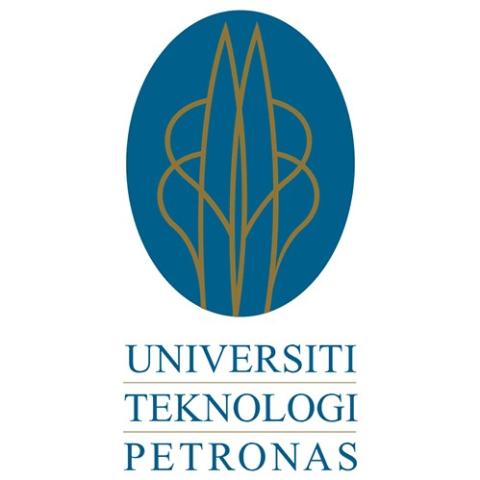
Campus life is entering a new era, but don’t forget the human touch
Until the Covid-19 pandemic, the typical university experience had remained relatively unchanged for years: students poring over textbooks within high-ceilinged libraries, lively debate arising from bustling classrooms and enduring camaraderie cemented through late-night discussions.
Nonetheless, this traditional image is transforming in the swiftly advancing technological landscape. Digital technology is now interweaving itself into the fabric of campus life, changing how students assimilate knowledge, establish connections and navigate the academic world. As academics, you are at the forefront of this change, empowered to adapt and make the most of these technological advancements in your students’ learning journey.
Learning reimagined
The rise of digital technology has revolutionised the dissemination of knowledge, particularly in higher education. The traditional lecture format is now being reimagined through the lens of edtech tools. Flipped classrooms offer an interactive alternative to the traditional lecture approach, where core concepts are delivered through pre-recorded lectures and class time is dedicated to interactive discussions and activities.
- How to develop a digital competency framework everyone can benefit from
- How to use YouTube videos in a flipped classroom system
- Let’s talk: how to connect with your students in a blended learning environment
Lecturers can now foster active learning and engagement among students using discussion boards and collaborative platforms such as Microsoft 365. Learning management systems (LMS) such as Moodle and Canvas have become central hubs for course materials, assignments and communication channels, streamlining the flow of information between lecturers and students. These tools are changing how knowledge is conveyed and acquired in higher education.
What does edtech offer?
Several factors drive this shift in the pedagogical approach:
- Digital tools cater to diverse learning styles. Both visual and auditory learners respond well to multimedia presentations, simulations and recorded lectures.
- The flipped classroom model enables a more personalised learning experience. Lecturers can dedicate time to addressing specific student needs, fostering deeper understanding and critical thinking.
- Online platforms, such as discussion forums, provide asynchronous participation opportunities, ideal for more reserved students in traditional classroom settings. This inclusivity is crucial in creating a dynamic and enriching learning environment.
Tools for knowledge creation and dissemination
The impact of technology extends beyond the physical boundaries of the classroom. The advent of online research databases and e-journals has brought about a revolution in access to information. Students are no longer limited to traditional physical library resources, but can explore an extensive global pool of resources with just a few clicks. In addition, tools like citation management software, such as Zotero and Mendeley, have streamlined the research and writing process, ensuring proper referencing and academic integrity.
However, the availability of such an extensive pool of information online comes with a caveat. The sheer volume can be overwhelming, necessitating the development of critical evaluation skills to distinguish credible sources from misinformation. Universities are crucial in equipping students with digital literacy skills to navigate this vast online information landscape. Developing digital literacy skills is a prerequisite for students to identify, evaluate and use information effectively and ethically.
One way to do this is by integrating these skills into existing courses. For example, lecturers can teach students how to evaluate information as part of their research assignments, and librarians can hold workshops tailored to different academic disciplines. This approach equips students with the practical tools to critically analyse online sources and find reliable materials.
Beyond the classroom
Digital technology has profoundly impacted how students connect and build communities beyond academia. Social media platforms such as Facebook, Instagram, TikTok and university-specific virtual event platforms have facilitated connections based on shared interests, extracurricular activities and academic pursuits.
Instagram, emphasising visual content, allows students to share campus experiences, showcase university life and connect with others based on shared interests.
TikTok is a powerful tool for student engagement. Universities can create challenges with specific hashtags for students to showcase campus life in fun and creative ways. Student organisations can also use TikTok to promote events and activities.
Virtual event platforms such as Microsoft Teams and webinars have enabled guest lectures, workshops and club meetings to reach a wider audience, transcending geographical limitations. It’s enabled guest speakers and industry experts from around the globe to interact with students, broadening their academic and professional horizons.
These virtual spaces have proven particularly beneficial for international students and those with social anxiety, as they can connect with like-minded peers before physically arriving on campus.
The two sides of the coin
The integration of digital technology undoubtedly offers many benefits. But it has its challenges, too. The digital divide, the gap between those with access to technology and those without, can exacerbate educational inequalities. Students from underprivileged backgrounds who need access to reliable technology may struggle to keep pace with their peers. Constant notifications and distractions can hinder focus and lead to information overload. Also, online interactions often lack the depth of face-to-face communication, potentially diminishing the sense of community fostered by in-person interactions.
To address this gap, universities must prioritise digital equity initiatives, perhaps offering subsidised loaner devices to ensure that students have the tools to participate fully in the digital campus environment. By doing so, universities can ensure that every student has an equal opportunity to succeed, regardless of their socio-economic background.
Additionally, fostering digital literacy skills is crucial. Workshops and training programmes can equip students with the essential technical know-how to navigate the online world.
The impact of digital technology on the traditional campus experience is undeniable. However, remember that technology is a tool, not a replacement. The future of higher education likely lies in a hybrid model, where digital tools empower, rather than supplant, the irreplaceable value of in-person learning and social interaction. Universities will need to find innovative ways to leverage technology while also fostering a vibrant campus life, meeting the needs of the digital generation.
Nazlihasri Abdul Rahman is senior director for digital innovation and technology at Universiti Teknologi Petronas.
If you would like advice and insight from academics and university staff delivered direct to your inbox each week, sign up for the THE Campus newsletter.




